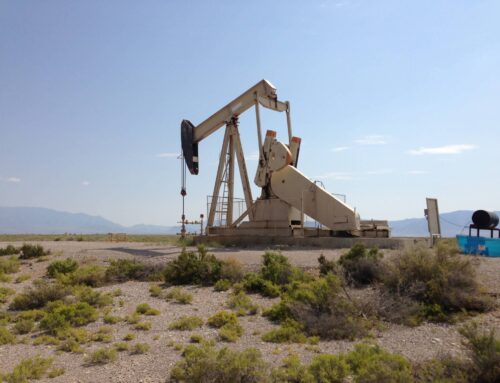Wildfire spending is on the mind of many lawmakers as appropriations bills for FY2025 continue to move forward in the House and the Senate.
Wildfire spending, while spread throughout the federal budget, is primarily concentrated under the U.S. Forest Service (USFS) and the Department of the Interior (DOI). The USFS and DOI Wildland Fire Management (WFM) accounts oversee the majority of expenditures for wildfire response activities on federal lands, including firefighter salaries and equipment. The DOI WFM account also contains appropriations for research (Joint Fire Science Program), mitigation (hazardous fuels management), and recovery (burned area recovery), whereas these line items are located under other USFS offices. Additionally, the USFS offers two grant programs— State Fire Capacity and Volunteer Fire Capacity—aimed at building state and local capacity to address wildfires.
USFS and DOI wildfire-related programs are funded under the Interior-Environment appropriations bill. The House voted to approve its draft of the FY2025 appropriations bill in July 2024. The Senate also passed its draft out of committee in July but has not held a full vote. As they currently stand, both the Senate and House drafts of the FY2025 appropriations bill would increase funding for federal wildfire programs over FY2024 levels.
Select U.S. Forest Service and Dept. of Interior Appropriations ($, thousands)
| Program | FY2024 Funding | FY2025 Budget Request | FY2025 Senate Draft | FY2025 House Draft |
| U.S. Forest Service | ||||
| WFM Preparedness | 192,000 | 204,500 | 204,500 | 192,000 |
| WFM Suppression | 1,011,000 | 1,011,000 | 1,011,000 | 1,011,000 |
| WFM Salaries & Expenses | 1,109,654 | 1,334,942 | 1,223,111 | 1,204,735 |
| State Fire Capacity | 76,000 | 76,000 | 78,000 | 78,000 |
| Volunteer Fire Capacity | 21,000 | 21,000 | 22,000 | 23,000 |
| Fuels Management | 175,450 | 207,000 | 208,548 | 202,000 |
| Joint Fire Science | 3,000 | 4,000 | 4,000 | 6,000 |
| Dept. of Interior | ||||
| Preparedness | 492,364 | 568,777 | 554,366 | 526,429 |
| Suppression | 383,657 | 383,657 | 383,657 | 383,657 |
| Fuels Management | 214,450 | 287,606 | 244,766 | 255,000 |
| Burned Area Recovery | 10,000 | 20,470 | 10,000 | 10,000 |
| Fire Facilities | 10,000 | 15,000 | 14,000 | 14,000 |
| Joint Fire Science | 3,000 | 4,000 | 4,000 | 6,000 |
| Wildfire Suppression Operation Reserve Fund | 2,650,000 | 2,750,000 | 2,750,000 | 2,750,000 |
| TOTAL | 6,351,575 | 6,439,793 | 6,711,948 | 6,661,821 |
While not funded the same amount, the House and Senate drafts would both increase funding for the USFS and DOI Fuels Management accounts, which oversees hazardous fuels reduction projects in national forests and on federal lands, as well as fully and partially funding other USFS grant programs. The House and Senate drafts would also increase funding for the Joint Fire Science, an interagency partnership between the USFS and DOI that supports basic and applied research in wildfire science, and State Fire Capacity and Volunteer Fire Capacity grant programs.
Funding boosts for research and mitigation work is essential to supporting the historic investment in wildfire mitigation made by Congress through the Infrastructure, Investment and Jobs Act (IIJA) and the Inflation Reduction Act (IRA). However, more transparency and accountability is also needed to evaluate and assess on going mitigation efforts and to better inform future mitigation work that could reduce our wildfire suppression liabilities in the long run.
The Wildfire Suppression Operation Reserve Fund, which provides additional federal funds for urgent wildfire suppression activities, would be funded under both bills at the statutory cap of $2.75 billion. The Reserve Fund’s annual funding level cap is set to increase by $100 million every fiscal year until it expires at the end of FY2027. The DOI and USFS WFM Suppression accounts are one of few line items that would be funded at last year’s levels —frozen at the ten-year average cost for wildfire suppression operations as requested in the President’s FY2015 Budget, $383.7 million and $1.01 billion respectively— as it is a requirement to access the Wildfire Suppression Operation Reserve Fund.
As the Reserve Fund is soon set to expire, Congress has the opportunity to reevaluate the best structure to fund wildfire suppression activities moving forward. Under the current Reserve Fund structure, all WFM suppression accounts are frozen at FY2015-related averages, but as fire costs rise, this base funding level should be recalibrated using more recent data. Mandating increased transparency of the Reserve Fund — such as semi-annual reporting requirements — could also help inform federal wildfire budgeting decisions.











Get Social